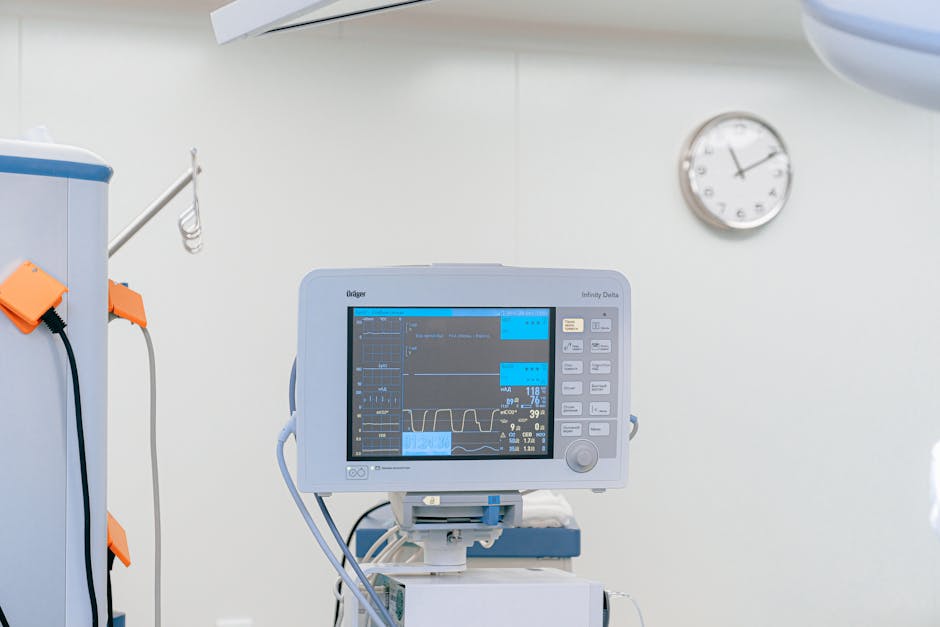How Do Trauma Shears Work? A Quick Guide
In the realm of emergency response and medical care, trauma shears stand out as an indispensable tool. Often found in the hands of medical professionals, EMTs, and law enforcement, these shears are designed to provide swift and efficient cutting in critical situations. Unlike regular scissors, trauma shears are engineered specifically to handle tough materials such as clothing, seat belts, and even thin metal. Their ergonomic design ensures that they can be operated with ease, even in high-pressure scenarios.
The effectiveness of trauma shears lies in their unique build. They typically feature a serrated blade that prevents slipping and ensures a clean cut through rugged materials. The handles are often made from robust plastic, providing a comfortable grip that allows for maximum control. Additionally, many shears include a blunt tip to protect the patient from accidental injury during use.
Understanding how trauma shears work is crucial for anyone involved in emergency response. Their role extends beyond just cutting; they are vital in freeing individuals from restrictive clothing or entanglements quickly and safely, which can be a matter of life and death. As such, trauma shears are a staple in first aid kits and emergency response gear worldwide.
To delve deeper into the functionality and benefits of these essential tools, find out more by visiting our website.
Understanding Trauma Shears

At the heart of any effective emergency response toolkit is a pair of trauma shears. But what sets these shears apart from conventional scissors? Primarily, it’s their design and intended use. Constructed for strength and precision, trauma shears are developed to cut through a wide variety of materials, making them invaluable in situations where time is of the essence.
The blades of trauma shears are often made from stainless steel, allowing them to maintain sharpness and resist corrosion. This durability is essential, as they are frequently used to cut through tough fabrics like denim or leather. Additionally, the blades are typically angled, which facilitates cutting close to the skin without risk, thanks to the blunt tip design.
Another key feature is the shears' size and handle design. They are generally larger than regular scissors, providing the leverage needed for efficient cutting. The handles are ergonomically designed, often with finger loops large enough to be used while wearing gloves—a common necessity in emergency situations. This ensures that the user can maintain a firm and comfortable grip, even under duress.
Moreover, many trauma shears include additional features such as integrated rulers for quick measurements or oxygen tank wrenches, enhancing their functionality beyond simple cutting tasks. These thoughtful additions make trauma shears not just a cutting tool, but a multi-purpose instrument essential in emergency settings.
Key Features of Trauma Shears

Trauma shears are a staple in emergency and medical settings, distinguished by several key features that enhance their usability and effectiveness. These specialized tools are engineered to meet the demanding requirements of first responders and healthcare professionals.
One of the most notable features is the angled blade design. This feature provides a mechanical advantage, allowing users to apply less force while still achieving clean cuts through thick materials like leather, bandages, and even seatbelts. The angled blades also aid in reaching difficult areas, making them ideal for emergency situations where precision is critical.
The blades themselves are crafted from high-quality materials such as stainless steel, known for its corrosion resistance and durability. This ensures that the blades remain sharp and reliable over time, even after repeated use in harsh environments.
Another significant feature is the blunt tip of the trauma shears. This safety measure prevents accidental injury to patients when cutting close to the skin. It is an essential element that allows medical personnel to work quickly and safely, minimizing the risk of further harm.
Additionally, the shears often include large finger loops and an ergonomic handle design, ensuring a comfortable and secure grip, which is particularly important when wearing gloves. Some models also incorporate a ruler along the blade for quick measurements and an integrated oxygen tank wrench, further increasing their versatility in emergency scenarios.
Functionality in Emergency Situations

In the high-stakes environment of emergencies, the functionality of trauma shears becomes paramount. These tools are meticulously designed to perform under pressure, ensuring that medical and emergency personnel can act swiftly and efficiently.
One of the primary functionalities of trauma shears is their ability to cut through a variety of materials. In urgent situations, time is of the essence, and the shears' robust design allows them to slice through clothing, seat belts, and even tough materials like leather and denim with ease. This capability is crucial when a patient's clothing needs to be removed quickly to assess injuries or administer treatment.
The ergonomic design of trauma shears is also tailored for rapid response. With large finger loops and a comfortable grip, these shears ensure ease of use, allowing first responders to maintain control even in high-pressure situations. This is particularly important when gloves are worn, as it prevents slippage and ensures precision.
Moreover, the inclusion of additional features such as an integrated oxygen tank wrench or a built-in ruler further enhances their utility. These multifunctional aspects mean that responders can carry fewer tools while still being prepared for a wide range of scenarios, from cutting away clothing to adjusting medical equipment.
Ultimately, the functionality of trauma shears in emergencies is about providing a reliable, versatile tool that enhances the responder's ability to deliver immediate care. This reliability can make a significant difference in outcomes, underscoring the importance of their role in emergency preparedness.
Benefits for Medical Professionals

For medical professionals, the benefits of using trauma shears are numerous and impactful, enhancing their ability to provide effective patient care. In fast-paced medical environments, these shears are indispensable tools, designed to improve efficiency and safety.
One of the foremost advantages is their ability to facilitate rapid patient assessment. Trauma shears allow medical staff to quickly remove clothing and other obstructions, granting immediate access to wounds or injuries. This quick action is pivotal in emergency care, where every second counts in diagnosing and treating patients.
Additionally, the durability of trauma shears means they are less likely to dull or break during use, offering a reliable solution through repeated applications. This longevity ensures that medical professionals can focus on patient care without worrying about equipment failure, which is crucial in maintaining the continuity of care.
The ergonomic design of trauma shears also reduces hand fatigue, an important factor for medical personnel who may be handling numerous emergencies in a single shift. The user-friendly design enhances grip and control, which is essential for precise cutting and avoids accidental injury to the patient.
Furthermore, trauma shears' versatility extends beyond emergency situations. In general medical practice, they can be used for tasks such as cutting bandages or medical tape, making them a valuable addition to any medical kit. This multifunctionality supports a broad range of clinical activities, underscoring their utility across various medical settings.
Overall, the integration of trauma shears into medical practice not only optimizes emergency response but also supports diverse medical procedures, exemplifying their indispensable role in the healthcare industry.
Choosing the Right Trauma Shears
Selecting the right trauma shears is crucial for medical, emergency, and tactical professionals who rely on these tools in critical situations. With various options available, understanding the key features to consider can significantly impact performance and reliability.
Firstly, consider the material of the shears. High-quality trauma shears are typically made from stainless steel or other durable metals that resist corrosion and maintain sharpness over time. This ensures that the shears will provide clean and precise cuts, even after extensive use.
Another essential factor is the shears' design. Look for ergonomic handles that offer a comfortable grip, reducing hand fatigue during prolonged use. This is particularly important for professionals who may need to perform numerous cuts in a single shift. Additionally, the shears should have a blunt tip to prevent accidental injury to the patient or the user.
Consider the shears' versatility as well. Some trauma shears come with integrated features like oxygen tank wrenches or built-in rulers, which can be useful in various emergency scenarios. These added functionalities can enhance the overall utility of the tool, making it a worthwhile investment.
It's also beneficial to choose trauma shears that are easily sterilizable, ensuring hygiene and safety, especially in medical environments. Some models are designed to withstand autoclave sterilization, adding to their practicality.
Making the right choice in trauma shears can greatly enhance a professional's ability to perform efficiently and effectively. For further information on selecting the ideal trauma shears for your specific needs, visit our website.





